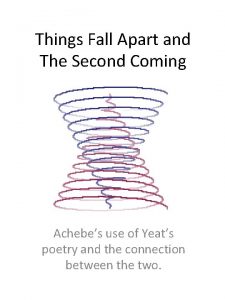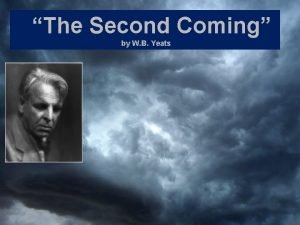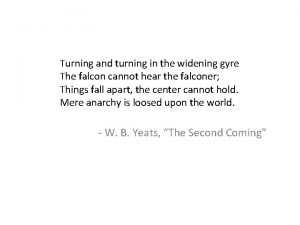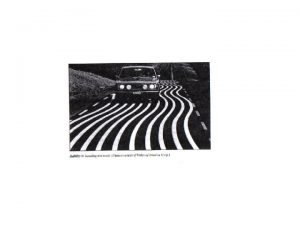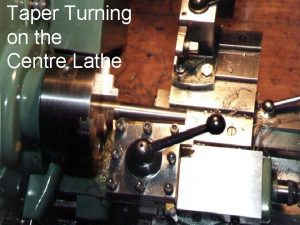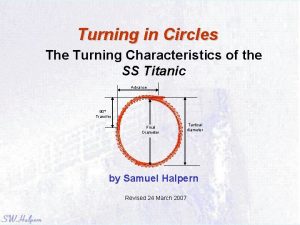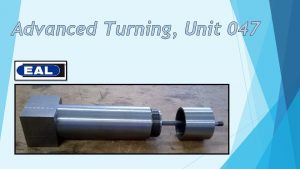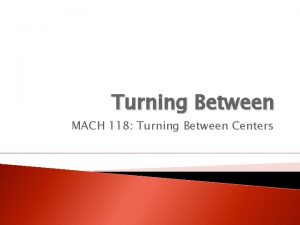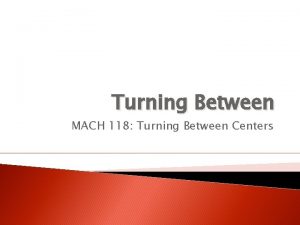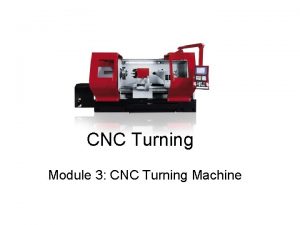Centre for Transport Studies Transport Planning Turning the


















- Slides: 18

Centre for Transport Studies Transport Planning: Turning the Process on its Head From ‘Predict and Provide’ to Vision and Validate’ Peter Jones Centre for Transport Studies, UCL Presentation to the UCLTI Radical Transport Conference, June 20 th 2016

Overview • Historically have attempted to predict future conditions and then provide transport measures and infrastructure to meet anticipated demand – ‘predict and provide’ • Increasingly this is questioned, due to seemingly greater uncertainty, BUT at same time a growing awareness that cities can INFLUENCE future • UK city regions developing comprehensive visions – paper proposes that we should start with these outcomes and then see what types of investments can be justified to support them – ‘vision and validate’

‘Peak car’ in Western European Cities Source: EU ‘CREATE’ Project

‘Predict and Provide’ • Can be traced back to 1960 s Urban Land Use/ Transportation Studies: – Forecast likely growth in car ownership and use – Demonstrate inability of existing road networks to cope with this increased demand – Propose major road building to avoid extreme congestion and gridlock (maybe with demand management) – Iterate until major problems addressed (or budget/political limits reached)

Simplified Description of ‘P&P’ Process Existing network characteristics Describe existing (car) travel patterns Forecasts changes in population, incomes, car ownership…. Forecast future (car) travel patterns Forecast (poor) network conditions Develop investment (and management) proposals Recommended investments

Emerging Issues - 1 • In larger cities found that could not build enough roads to avoid heavy congestion if cars freely used • New emphasis on modal shift and improving public transport (‘carrot and stick’) • But still based on forecasting the future and providing for this – so very difficult to predict trend breaks • Better at forecasting negative externalities than positives (e. g. improved health)

Emerging Issues - 2 • Increasingly transport seem as contributing major benefits to other sectors • Over time, unreliability of forecasts have became apparent – both road and rail • Growing awareness of ‘uncertainty’ issues, due to global volatility (e. g. oil prices) and technological advances (e. g. automated vehicles)


Responses to this Problem • Development of ‘scenarios’, based on varying assumptions about changes in ‘drivers of demand’ (incomes, fuel prices, etc. ) • Emergence of ‘backcasting’ techniques: given a goal or target (e. g. X% CO 2 reduction), how do we get from ‘there’ back to ‘here’, through measures to achieve desired behaviour change?

Road Traffic Forecast Scenarios 2015

Variant: NZ scenario set 2042 (Lyons and Davidson, 2016)

Backcasting (Banister & Hickman, 2013)

Variant: Scenarios + Backcasting ‘Pluralistic backcasting (Tuominen et al, 2014)

Proposal: ‘Vision and Validation’ • Develop comprehensive future city/country vision • Identify what role transport should contribute to delivering the vision: major investments - plus (more flexible) pricing and regulatory measures • Determine under what future set of conditions this major investment would have proved to have provided good value for money • See if the programme can be tweaked to increase robustness – Real Options Analysis

Simplified Description of ‘V&V’ Process Comprehensive, multi-sector vision for the future development of a city or country Identify role that transport can play in delivering vision Ranges for possible future population, incomes, etc. Develop preliminary set of investment plans Stress test/validate: under what range of future conditions would this be valid? Iterate to increase the robustness of the investments Recommended transport investments

But, would this work? • Many core cities have developed multi-sector visions; also some nations - the ‘Wales we want national conversation’ • Now have much better understanding of how transport contributes to meeting other sectors’ objectives • Much easier to identify ranges of possible values of drivers of demand than forecast one set • Multi-sector approach also generally strengthens case for transport investment • More challenging for ‘siloed’ central government

Redefining ‘forecasting’ Forecasting is no longer about secondguessing the future, but about assessing under what range of futures the proposed policy/investment would be valid – helping to optimise the investment package

Centre for Transport Studies Thank you! peter. jones@ucl. ac. uk
 The second coming and things fall apart
The second coming and things fall apart Surely the second coming is at hand
Surely the second coming is at hand Turning and turning in the widening gyre
Turning and turning in the widening gyre Paradigm shift from women studies to gender studies
Paradigm shift from women studies to gender studies Blencathra field centre
Blencathra field centre Laurie baker low cost housing techniques
Laurie baker low cost housing techniques Centroid problems engineering mechanics
Centroid problems engineering mechanics Differentiate between centre of mass and centre of gravity
Differentiate between centre of mass and centre of gravity Primary vs secondary active transport
Primary vs secondary active transport Primary active transport and secondary active transport
Primary active transport and secondary active transport Now answer the following questions
Now answer the following questions Active transport vs passive transport venn diagram
Active transport vs passive transport venn diagram Pinocytosis vs phagocytosis
Pinocytosis vs phagocytosis Primary active transport vs secondary active transport
Primary active transport vs secondary active transport Bioflix activity membrane transport active transport
Bioflix activity membrane transport active transport Active transport diagram
Active transport diagram Bioflix activity membrane transport active transport
Bioflix activity membrane transport active transport Fspos vägledning för kontinuitetshantering
Fspos vägledning för kontinuitetshantering Typiska drag för en novell
Typiska drag för en novell
